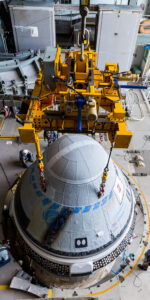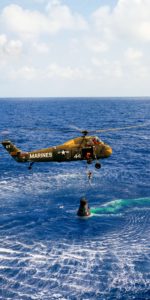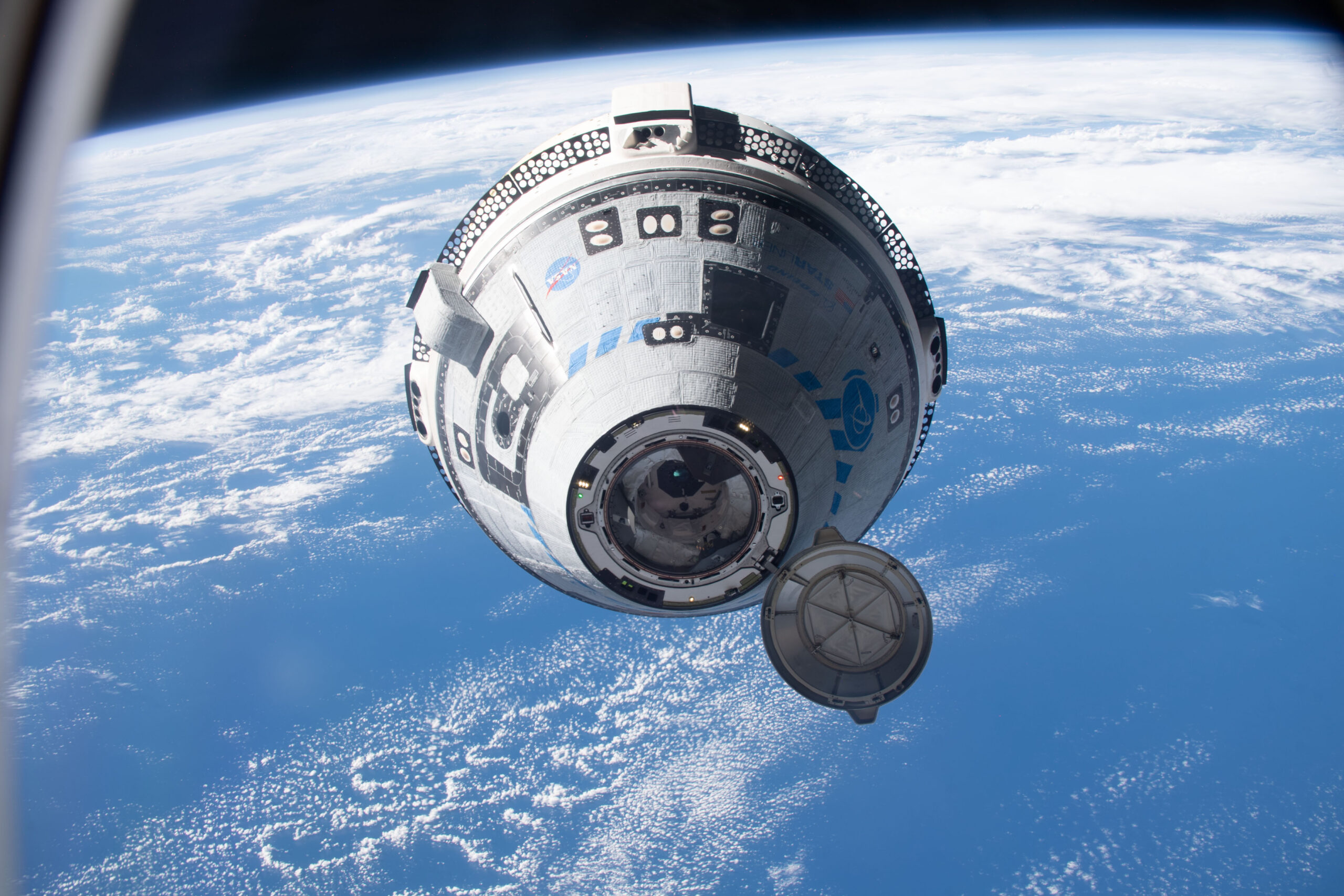
After more than a decade in development, Boeing stands ready to launch the highly anticipated Crew Flight Test (CFT) of its CST-100 Starliner spacecraft at 10:34 p.m. EDT Monday, 6 May. Veteran NASA astronauts Barry “Butch” Wilmore and Suni Williams—both retired Navy captains with a few minutes shy of 500 cumulative days of previous space-time between them— will lift off atop a United Launch Alliance (ULA) Atlas V booster from storied Space Launch Complex (SLC)-41 at Cape Canaveral Space Force Station, Fla., spend at least eight “docked” days aboard the International Space Station (ISS) conducting an extensive array of flight test objectives, then return to a parachute-and-airbag-aided landing on solid ground in the Western United States.
Current plans call for Wilmore and Williams to dock at the forward port of the Harmony node at 12:46 a.m. EDT Wednesday, 8 May—a couple of minutes sooner than originally timelined—for their week of activities in conjunctionJ with the station’s incumbent Expedition 71 Commander Oleg Kononenko, his Russian comrades Nikolai Chub and Aleksandr Grebenkin and NASA astronauts Matt Dominick, Mike Barratt, Jeanette Epps and Tracy Dyson. Notable flight test objectives include a “Safe Haven” period of isolation inside Starliner to demonstrate procedures for an emergency departure, including the powering-up and rapid checkout of spacecraft systems if an imminent undocking becomes necessary.
Wilmore and Williams will also complete pilot-proficiency training in support of future Starliner crews, which are expected to expand to four members on operational, long-duration missions. Since there are only two crew members aboard CFT, they expect to pull over two members of Expedition 71 to assist with their evaluations of four-crew operations.
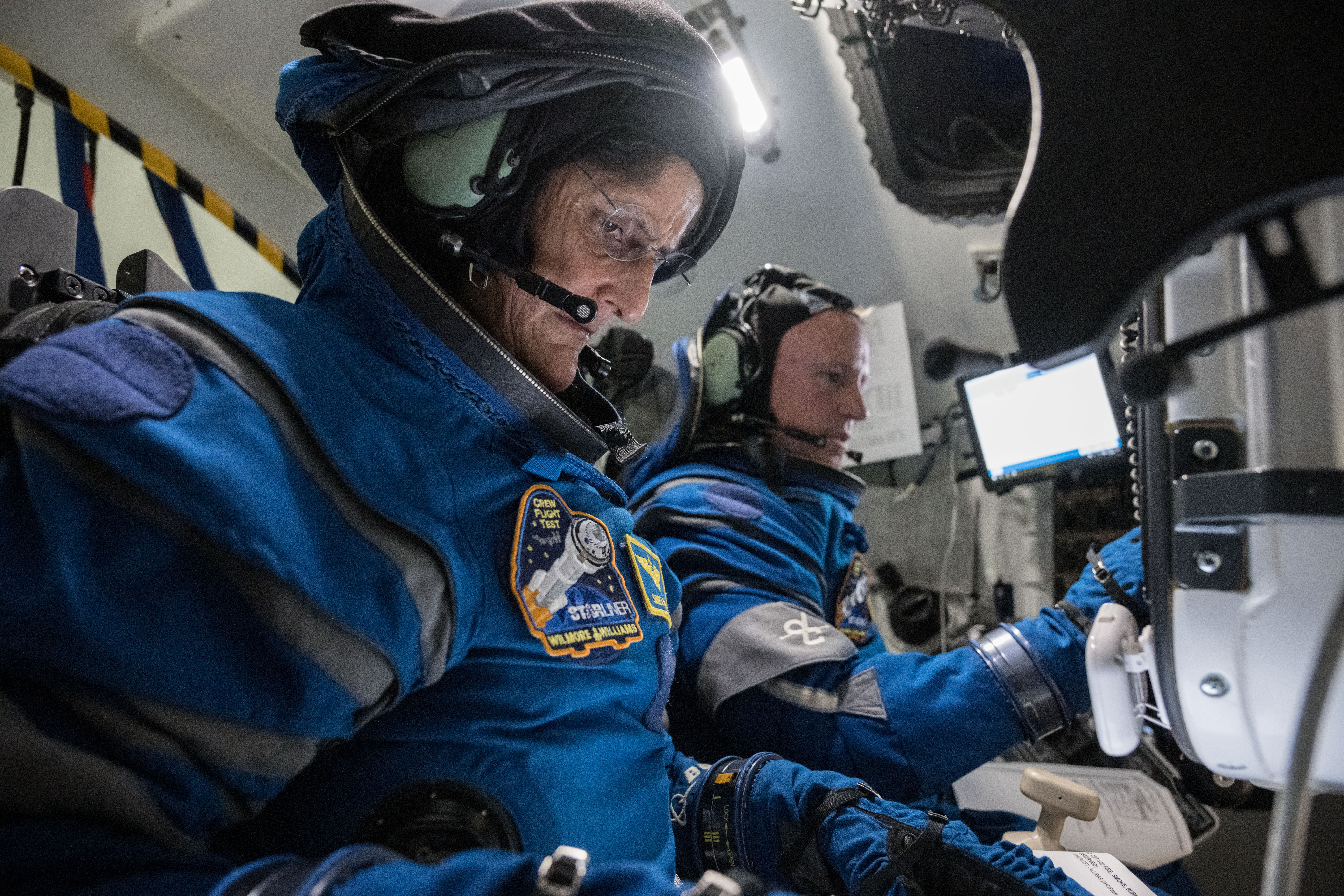
“We are going to have a whole new adventure,” said NASA Administrator Bill Nelson. “This is very much a part of our exploration of space and what I call the golden age of space exploration. It’s a historical day. It’s a wonderful day.”
“It’s exciting to bring Starliner and a United Launch Alliance Atlas vehicle online,” reflected NASA Commercial Crew Program Manager Steve Stich. “We’ve been striving for Commercial Crew to have two independent space transportation systems. That’s been our goal for Commercial Crew since its inception and we’ve very close to reaching that goal with the launch on Monday.”
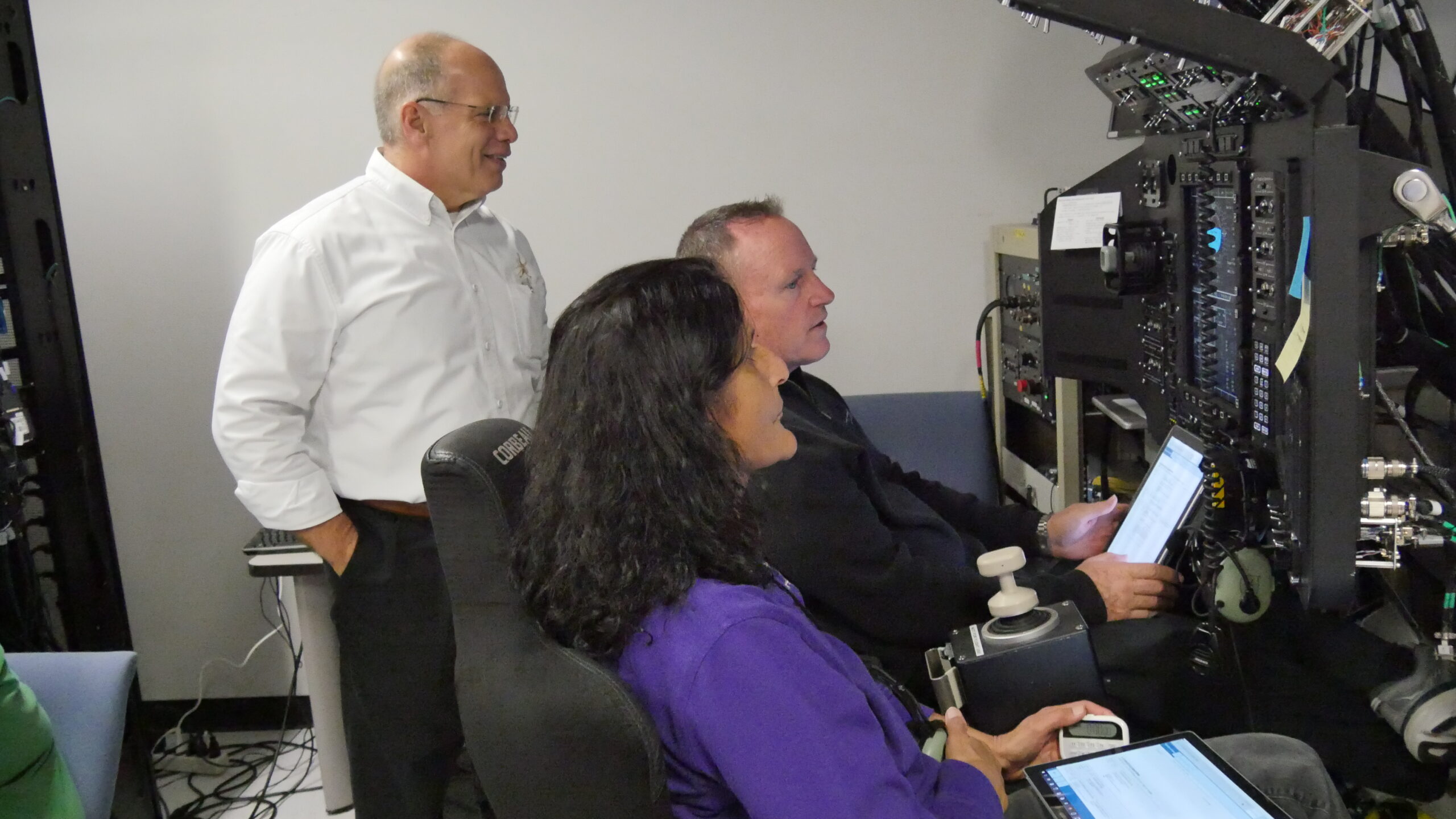
Added Mark Nappi, Boeing’s vice president and program manager for Commercial Crew: “We’re at peak performance right now and we are really excited to execute this launch. We’re ready to go!”
Weather on Monday evening looks exceptionally fine, too, with the 45th Weather Squadron at Patrick Space Force Base anticipating a 95-percent probability of acceptable conditions. Their only concerns center upon a slight chance of violating the Cumulus Cloud Rule during liftoff and ascent.
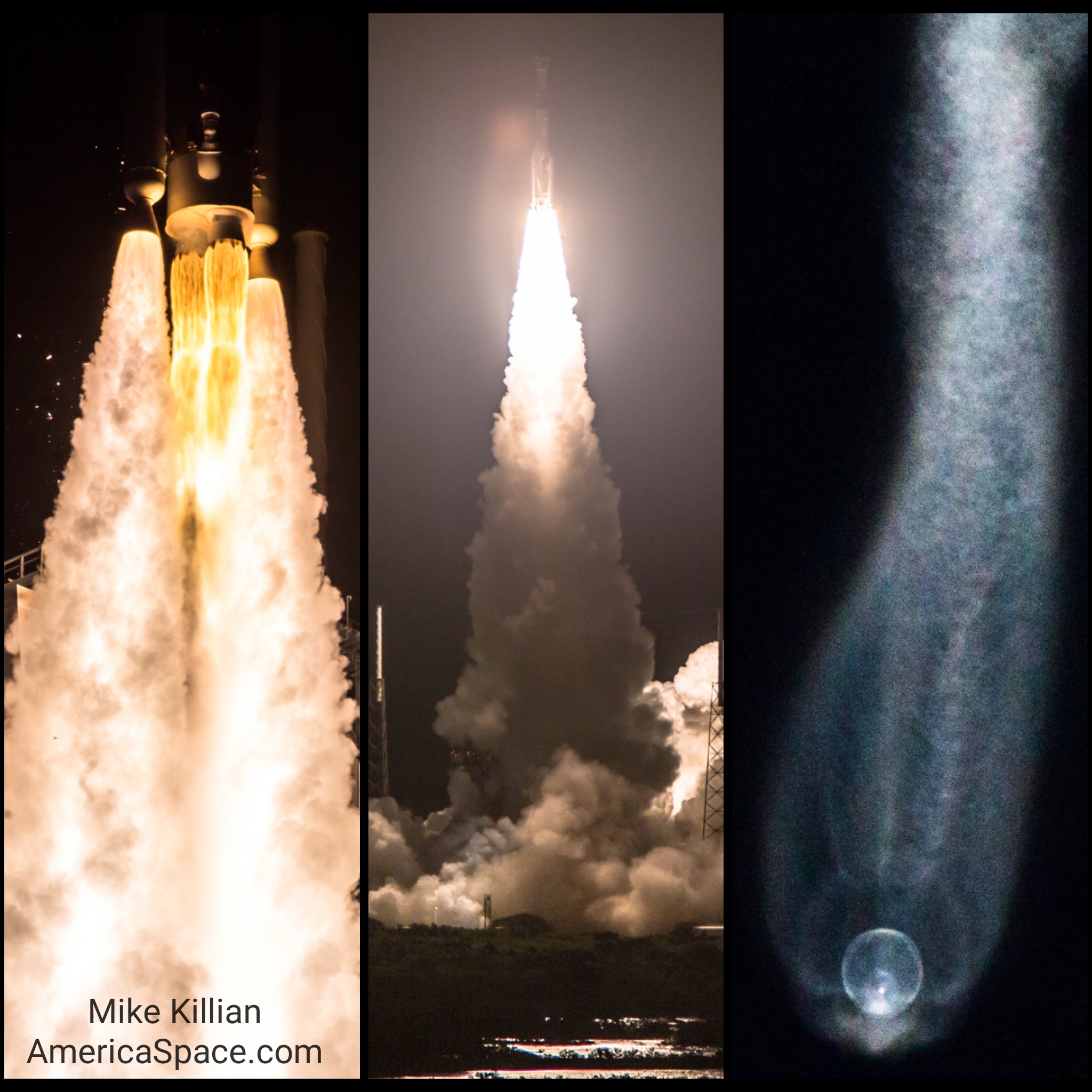
Yet despite the words of enthusiasm and the smiles of Mother Nature, as outlined in yesterday’s AmericaSpace story the road to this point has been fraught with difficulty. After several years of delay, caused in part by Congressional underfunding of the Commercial Crew Program, at 6:36 a.m. EST on 20 December 2019 an Atlas V delivered the first Starliner into orbit, without crew, for the critical week-long Orbital Flight Test (OFT) mission to the space station.
Unfortunately, the spacecraft suffered a series of off-nominal issues which prevented the spacecraft from docking at the ISS and necessitated a premature return to Earth on 22 December. These included an anomaly with Starliner’s mission elapsed timer, which caused the spacecraft to utilize more propellant than needed, which in turn delayed orbital insertion thruster “burns”. This issue forced Boeing to abort the ISS docking and put Starliner into an unplanned stable to save other critical mission test objectives, including a safe deorbit, re-entry and parachute-and-airbag-aided landing at White Sands, N.M.
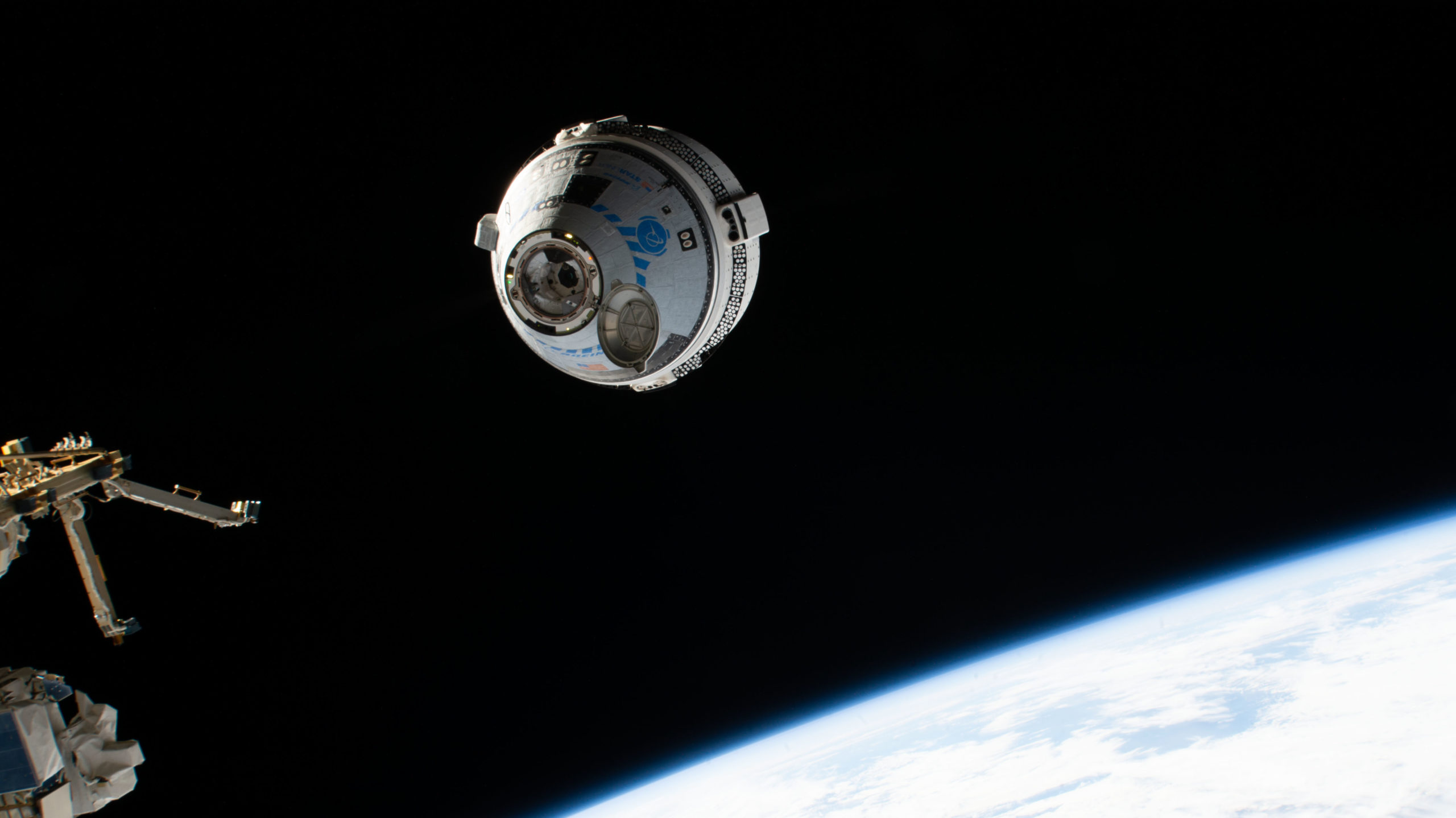
Despite its difficulties, OFT-1 achieved the first “land” landing of a crew-rated U.S. spacecraft since the Space Shuttle. But in March 2020, it was found that software coding errors had caused Starliner to incorrectly synch its Mission Elapsed Timer (MET) with the Atlas V prior to Terminal Count, which led the spacecraft to presume it was at a different phase of the mission after separating from the rocket.
As a consequence, it did not conduct its requisite maneuvers at the proper times. Additionally, the MET anomaly led to a review of other mission phases, which led to the detection and correction of another software issue which might have impaired the successful separation and disposal of Starliner’s service module prior to re-entry.
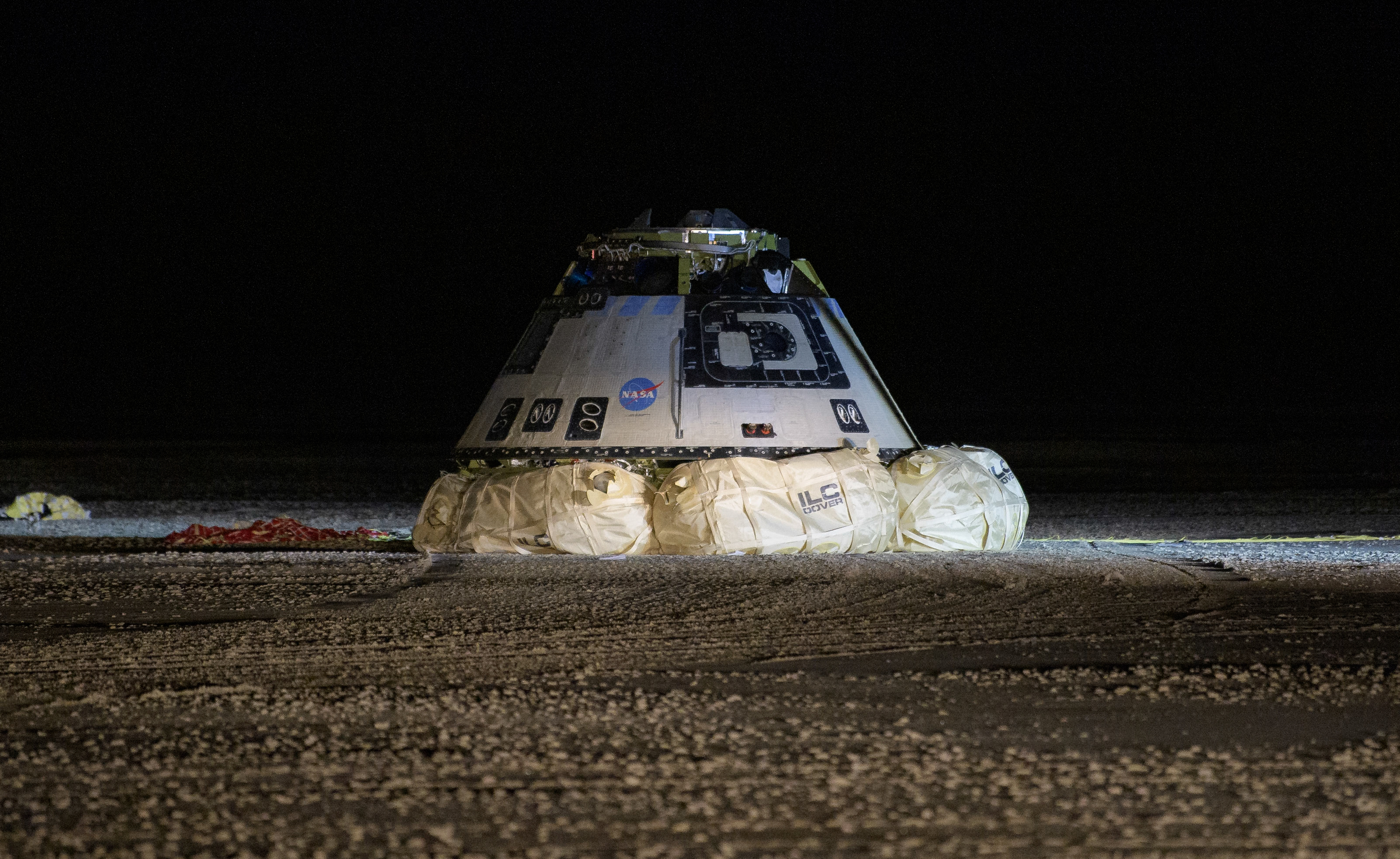
“Ground intervention prevented loss of vehicle in both cases,” NASA reported later. “Breakdowns in the design and code phase inserted the original defects. While both errors could have led to risk of spacecraft loss, the actions of the NASA/Boeing team were able to correct the issues and return the Starliner spacecraft safely to Earth.”
OFT-1’s third anomaly revolved around an unanticipated loss of Space-to-Ground Communication, where an intermittent forward-link issue impeded flight controllers’ ability to command and control Starliner, which might have caused reliable voice communications with the astronauts to have problematic, had a crew been aboard. Following the investigation, NASA declared a High Visibility Close Call (HVCC) and Boeing made the decision—at no cost to the U.S. Government—to fly a second uncrewed mission, OFT-2.
But as teams dug in to rectify the three primary issues which plagued OFT-1 and execute a top-to-bottom assessment of the entire Starliner system, the launch of OFT-2 slipped inexorably to the right. By August 2020, it had moved to no sooner than December of that year, with the Crew Flight Test (CFT) anticipated six month to a year thereafter.
Further delays followed, as the mission moved to March 2021, then no earlier than August-September. Plans to launch on 3 August 2021 were scrubbed when “unexpected valve position indicators” were detected in Starliner’s propulsion system. Those indications materialized in the final hours of the countdown, as the spacecraft sat poised atop its Atlas V launch vehicle on the pad at Cape Canaveral Space Force Station, Fla., and the 172-foot-tall (52.4-meter) stack was rolled back to the Vertical Integration Facility (VIF) to enable engineers to access the system and attempt corrective actions.
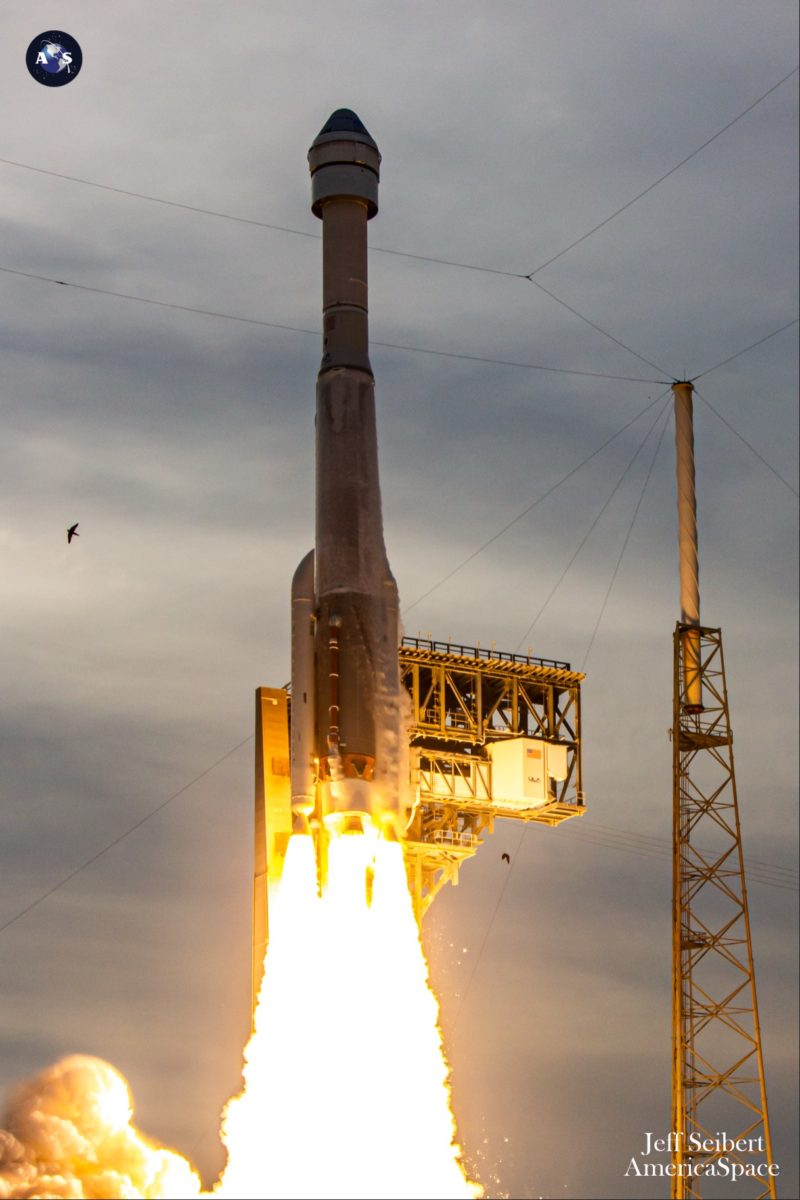
The result was a substantial delay well past August 2021 and deep into the following spring as teams wrangled with the valves, which had declared themselves closed when they should have been open. At length, OFT-2 took flight at 6:54 p.m. EDT on 19 May 2022 and executed a successful six-day voyage to the ISS, during which Expedition 67 astronauts Kjell Lindgren, Bob “Farmer” Hines, Jessica Watkins and Samantha Cristoforetti opened the hatch and became the first humans to board Starliner while in space.
The mission also delivered about 500 pounds (225 kilograms) of NASA cargo and 300 pounds (135 kilograms) of Boeing cargo to the station. Despite the premature shutdown of two of Starliner’s Orbital Maneuvering and Attitude Control (OMAC) thrusters, shortly after orbital insertion—an issue later traced to a drop in chamber pressure—the system functioned without incident and OFT-2 successfully demonstrated a critical “Attitude Hold” capability and conducted a satisfactory checkout of the Vision-Based Electro-Optical Sensor Tracking Assembly (VISTA).
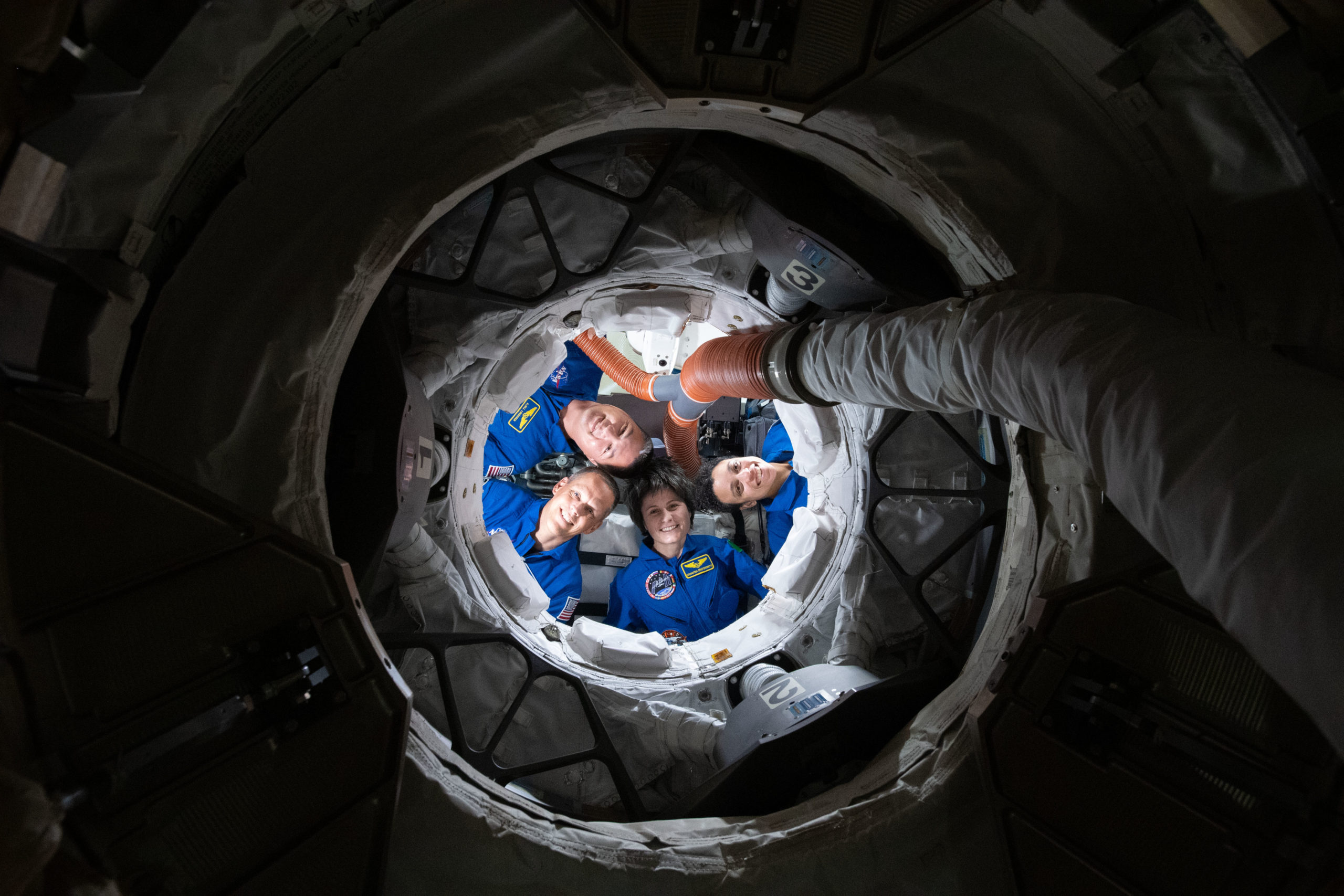
Following several docked days at the ISS, Starliner returned to Earth about 600 pounds (270 kilograms) of cargo and three spent Nitrogen Oxygen Recharge System (NORS) tanks. Touching down at White Sands Space Harbor (WSSH), N.M., at 4:49 p.m. MDT on 26 May, OFT-2 secured a new record of less than four hours for the shortest undocking-to-landing interval ever seen by a crew-capable U.S. visiting vehicle.
By August 2022, three months after OFT-2, NASA and Boeing teams outlined their broad satisfaction with the mission, noting that integrated systems “performed extremely well”, although several open areas of work remained before teams could commit to launching CFT. Specifically, those issues pertained to the OMAC shutdowns and a “deselection” associated with the spacecraft’s Reaction Control System (RCS). Inspections later revealed that the OMAC issue was induced by debris and the RCS deselection came about from low inlet pressures and delayed sensor responses.
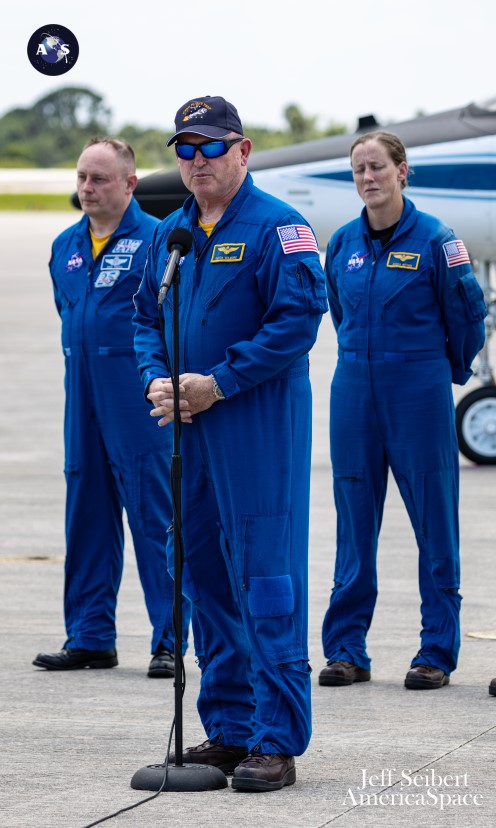
Two other concerns revolved around high pump pressures in the Active Thermal Conditioning System, which caused restricted flow-rates, and a flight software issue. Those problems forced a decision to reschedule the CFT launch from its December 2022 placeholder to No Earlier Than (NET) February 2023 and eventually April, in order to “deconflict” a busy manifest at the space station.
But further delay was afoot. By March 2023, CFT had slipped to July at the soonest, but early in June NASA and Boeing reported a pair of issues pertaining to Starliner’s parachute lines and P213 adhesive tape using on wiring harnesses, which by last August had pushed Wilmore and Williams’ launch date to NET March 2024. Notably, the tape was designed to protect spacecraft wiring from dust and chafing, as well as circumventing the risk of electrical shorts, but it was found that its adhesive properties “could present a flammability risk under certain conditions”, as teams dug into Starliner’s entire wiring protection architecture.
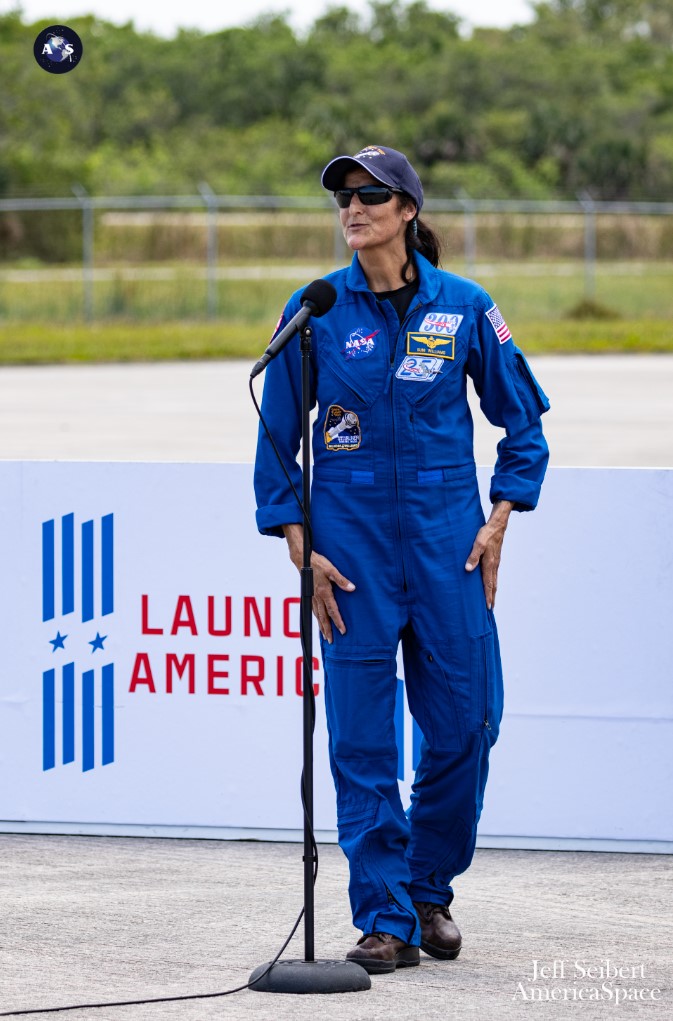
Meanwhile, the parachute issue centered upon small fabric “soft-links” used in the suspension lines of the spacecraft’s three main parachutes. These were found to have a failure load-limit several times lower than incorrect test results had led engineers to believe, decreasing their operational safety factor “pretty significantly”, according to Mr. Nappi, in comments made last summer.
By January, successful drop-tests of a Starliner mockup over the U.S. Army’s Yuma Proving Ground in the Arizona desert satisfactorily trialed the parachute improvements and Boeing confirmed that roughly 4,300 feet (1,300 meters) of P213 tape, with a mass of 17 pounds (7.7 kilograms), had been removed from the spacecraft’s crew module. Remediation techniques included “overwrapping” the P213 tape with another non-flammable, chafe-resistant tape, and installing fire breaks on wire harnesses.
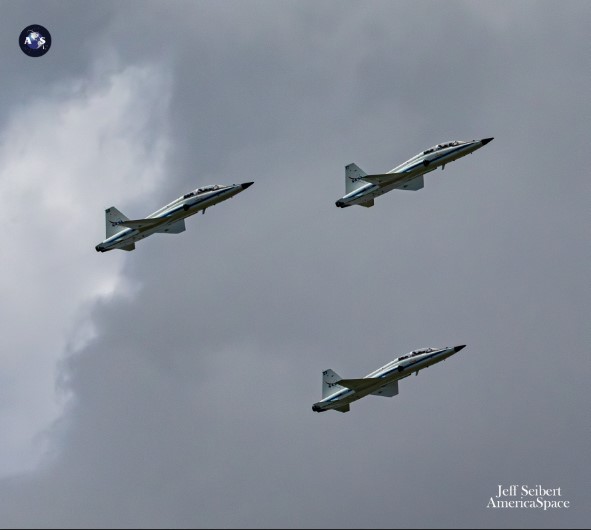
Launch had by now moved to no sooner than the mid-April timeframe and structural build-up of the Atlas V stack by ULA teams commenced in late February with the Launch Vehicle On Stand (LVOS) milestone. And in comments provided in late March, Wilmore revealed his fervent hope that CFT would fly as early as 1 May, a date which correspondingly slipped a few days to the right.
He and Williams, together with fellow NASA astronauts Mike Fincke and Jessica Wittner, flew from Ellington Field near Houston’s Johnson Space Center (JSC) to Florida in late April and completed a full day-of-launch training exercise, as they entered formalized quarantine, a process properly termed as Flight Crew Health Stabilization. A successful flight of CFT this month increases the likelihood that Boeing’s new spacecraft might be penciled-in for its first long-duration Post-Certification Mission (PCM)—Starliner-1—as early as next year.




